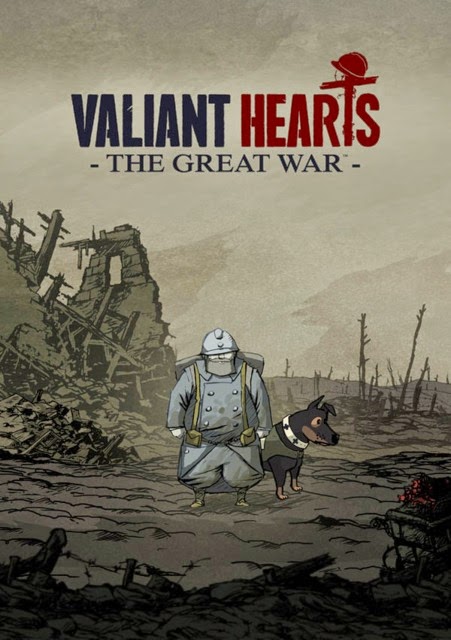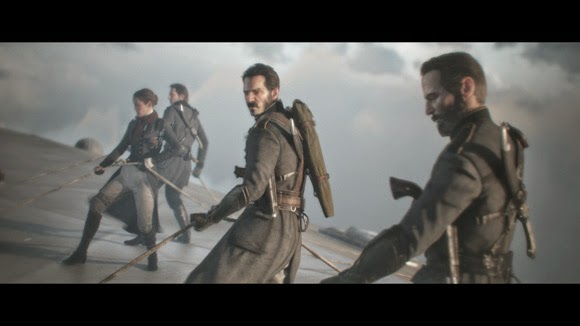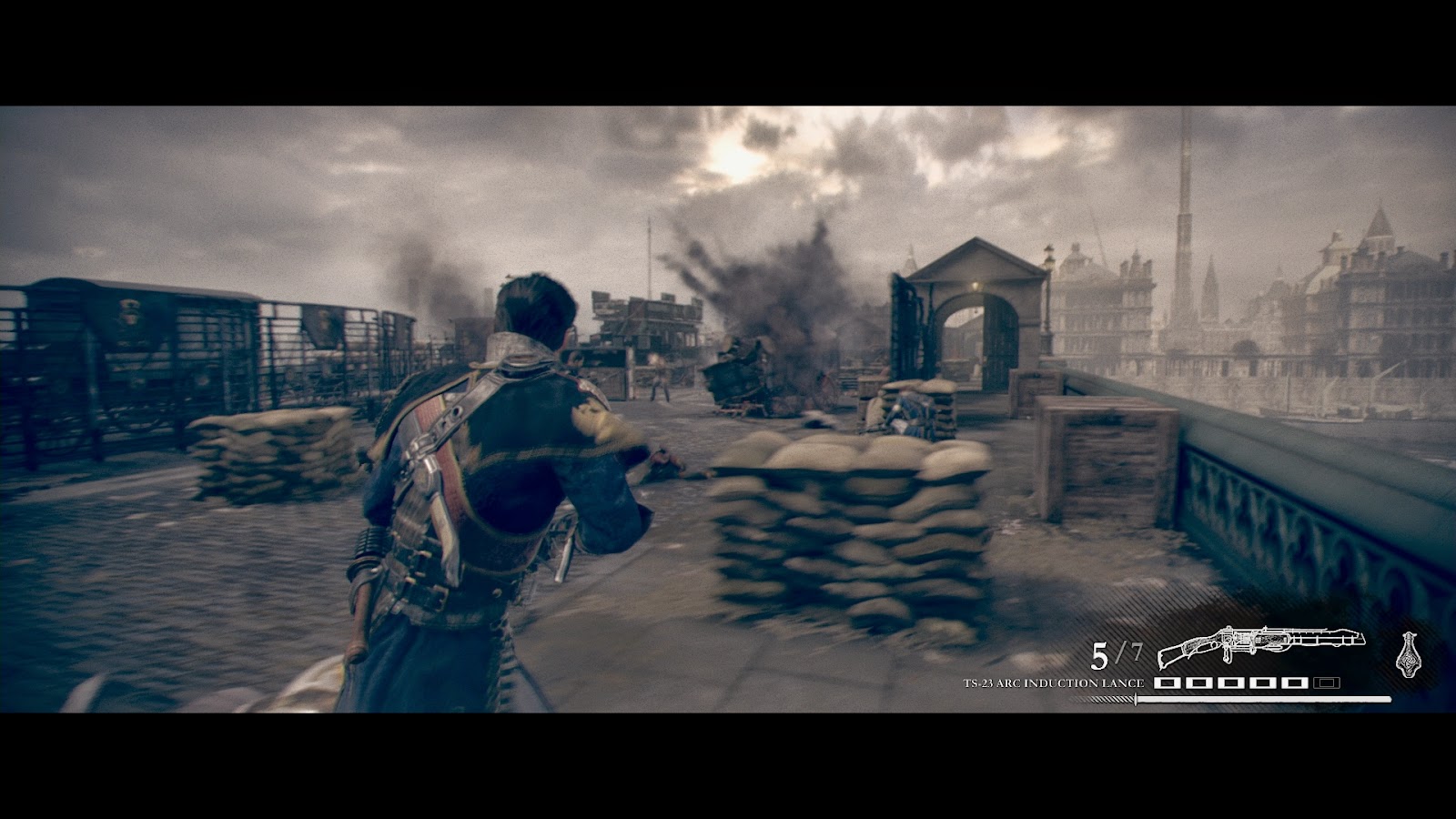Game: Valiant Hearts: The Great War
System: PS4 (also on PS3, Xbox 360, Xbox One, PC)
Genre: Adventure
Developer: Ubisoft Montpellier
Release date: June 24, 2014
Pros: Amazing art direction, top-tier production values, engaging and diverse gameplay
Cons: Easy puzzles
In an industry filled with war games that ask players to shoot first and ask questions later, it's refreshing to find a game that takes a moment to meditate on the causes and effects of violence, on its meaning, and on its meaninglessness. Valiant Hearts: The Great War, the latest from acclaimed studio Ubisoft Montpellier, is such a game.
Set in and around the Western Front during the First World War, Valiant Hearts follows several star-crossed characters whose lives are uprooted by the monumental conflict that engulfed all of Europe from 1914 to 1918. The four main characters, all playable, include a French farmer named Emile, conscripted into the French army; his son-in-law Karl, a German native, drafted into the German military machine; a Belgian nurse named Anna; and Freddie, an American expatriate living in Paris who volunteers to fight for the Allies.
Throughout the game's four chapters, which span the beginning of the war to its waning months, players will control all four characters as they solve puzzles and complete a variety of action events, all of which, while not necessarily difficult, are nonetheless engaging. Puzzles include everything from distracting guards to deciphering codes to ordering a faithful canine companion to retrieve out-of-reach items. The puzzles, which come in many shapes and sizes, are fun and rewarding, but difficult they are not. No adventure game enthusiast would ever confuse the linear and approachable puzzles in Valiant Hearts with the brain-melting riddles in the LucasArts canon, for example. Nevertheless, the puzzles are regularly entertaining.
Even more entertaining that the game's puzzles are its action events, which include stealth sections, chase sequences, military assaults, and, yes, even boss battles. Avoiding sentries and dodging machine gun fire in real time is thrilling, and it provides a much-needed foil to the methodical puzzle-solving that makes up the rest of the game.
All of these action and puzzle sequences come to life thanks to the UbiArt Framework, a 2.5D engine developed in house at Ubisoft Montpellier. With gorgeous hand-drawn characters and backgrounds, Valiant Hearts at times plays like a wonderful piece of animation, something out of Les Armateurs. The engine and its artists capture the serene beauty of rural France, the fiery hellscape of no man's land, and everything in between. The end result is one of the most visually arresting video games ever made.
While Valiant Hearts may be shorter and less substantial than other big-budget epics, it still manages to pack a punch, artistically and mechanically. The puzzles, however easy, are fun and involving; the action scenes are thrilling and imaginative; and the whole package is beautifully drawn, scored, and written. It's a testament to the creativity of Ubisoft Montpellier. Moreover, it's a testament to the studio's bravery in making a war game less concerned with winners, losers, and kill count than it is on the heroism of everyday people and on war's devastating human cost. Francois Truffaut is credited with saying that making an anti-war movie is impossible, because all war movies end up making combat look like fun. Valiant Hearts is the rare anti-war piece that, by reflecting on the indignity and insanity of war, achieves its goal.
System: PS4 (also on PS3, Xbox 360, Xbox One, PC)
Genre: Adventure
Developer: Ubisoft Montpellier
Release date: June 24, 2014
Pros: Amazing art direction, top-tier production values, engaging and diverse gameplay
Cons: Easy puzzles
In an industry filled with war games that ask players to shoot first and ask questions later, it's refreshing to find a game that takes a moment to meditate on the causes and effects of violence, on its meaning, and on its meaninglessness. Valiant Hearts: The Great War, the latest from acclaimed studio Ubisoft Montpellier, is such a game.
Set in and around the Western Front during the First World War, Valiant Hearts follows several star-crossed characters whose lives are uprooted by the monumental conflict that engulfed all of Europe from 1914 to 1918. The four main characters, all playable, include a French farmer named Emile, conscripted into the French army; his son-in-law Karl, a German native, drafted into the German military machine; a Belgian nurse named Anna; and Freddie, an American expatriate living in Paris who volunteers to fight for the Allies.
 |
| Players must solve a variety of puzzles to advance. |
Throughout the game's four chapters, which span the beginning of the war to its waning months, players will control all four characters as they solve puzzles and complete a variety of action events, all of which, while not necessarily difficult, are nonetheless engaging. Puzzles include everything from distracting guards to deciphering codes to ordering a faithful canine companion to retrieve out-of-reach items. The puzzles, which come in many shapes and sizes, are fun and rewarding, but difficult they are not. No adventure game enthusiast would ever confuse the linear and approachable puzzles in Valiant Hearts with the brain-melting riddles in the LucasArts canon, for example. Nevertheless, the puzzles are regularly entertaining.
Even more entertaining that the game's puzzles are its action events, which include stealth sections, chase sequences, military assaults, and, yes, even boss battles. Avoiding sentries and dodging machine gun fire in real time is thrilling, and it provides a much-needed foil to the methodical puzzle-solving that makes up the rest of the game.
 |
| Real-time action sequences add variety to this puzzle adventure. |
All of these action and puzzle sequences come to life thanks to the UbiArt Framework, a 2.5D engine developed in house at Ubisoft Montpellier. With gorgeous hand-drawn characters and backgrounds, Valiant Hearts at times plays like a wonderful piece of animation, something out of Les Armateurs. The engine and its artists capture the serene beauty of rural France, the fiery hellscape of no man's land, and everything in between. The end result is one of the most visually arresting video games ever made.
While Valiant Hearts may be shorter and less substantial than other big-budget epics, it still manages to pack a punch, artistically and mechanically. The puzzles, however easy, are fun and involving; the action scenes are thrilling and imaginative; and the whole package is beautifully drawn, scored, and written. It's a testament to the creativity of Ubisoft Montpellier. Moreover, it's a testament to the studio's bravery in making a war game less concerned with winners, losers, and kill count than it is on the heroism of everyday people and on war's devastating human cost. Francois Truffaut is credited with saying that making an anti-war movie is impossible, because all war movies end up making combat look like fun. Valiant Hearts is the rare anti-war piece that, by reflecting on the indignity and insanity of war, achieves its goal.






